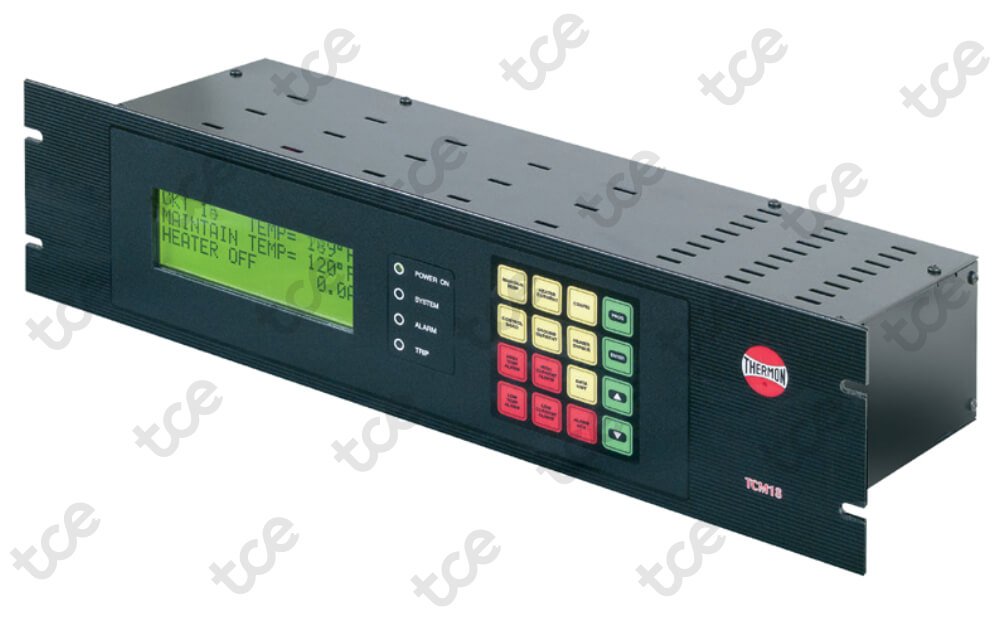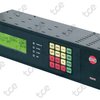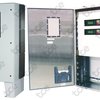Application overview
Control and monitoring systems play an essential role in heat tracing applications which range from freeze protecting water lines to maintaining critical process temperatures. Advancements in Thermon's TCM18 microprocessor have made electronic control and monitoring units both cost effective and reliable. Electronic control and monitoring systems ensure accurate temperature measurements, conserve energy and extend system life. A versatile electric heat tracing control and monitoring network is key to reducing operating cost in plants. The TCM18 functions as the user interface for a TraceNet TCM18 control panel network of heat tracing control modules. The TCM18 allows the operator to access operating control parameters and operating conditions throughout the heat tracing system network.
The new TraceNet TCM18 is an extension of Thermon’s proven control and monitoring systems (TraceNet, TC1818, TC202, TC201, TC101, and ECM). Each of these systems offer design simplicity and versatility. The components have been designed for easy installation, maintenance, and system expansion over the life of each system. The controller can be located in the field, reducing field wiring while providing efficient energy management and lower operating costs. Communications to each of these controllers can interface through serial, Ethernet, fiber optic, or wireless connection back to the plant centralized control center and/or TraceView Network Explorer (TVNE) which is specifically developed for use with electrical trace heating systems. TVNE is a Supervisory Control and Data Acquisition (SCADA) package developed specifically for interfacing with Thermon controllers. TraceView Network Explorer can be operated on a PC for Ethernet connections and can communicate with up to 4096 controllers over 32 channels, providing up to 15,000 heat trace circuits to be monitored within the same network.
TCM18 controllers sense ambient temperature and pulse power to the heat trace circuits proportionally. 100% power is applied at the minimum ambient temperature, and each heater is fully “off” at the desired maintain temperature. Ambient Proportional Control (APC) saves energy compared to conventional ambient proportional control.
Features
- Module operates in a wide range of ambient conditions
- Each heat tracing circuit allows input from single or dual RTD inputs
- User friendly four line heated LCD display for circuit and alarm information with input from a dedicated touchpad
- Conformally coated electronics for use in panels in indoor and outdoor locations
- Low and high temperature alarm and additional programmable high temperature trip functions
- Low and high heater current alarm and trip functions
- High ground/earth leakage current alarm and trip functions
- Internal test functions for ground/earth leakage functionality
- Includes On-Off, On-Off with Soft Start, Proportional, and APC (Ambient Proportional Control) modes
- Auxiliary 24 Vdc output for powering optional communication modules or other auxiliary devices
- Equipment has been evaluated and found suitable for Overvoltage Category II over the stated range of module supply voltage, in accordance with IEC-61010-1:2010
Resources
Datasheet
English (Europe) datasheet
Installation manual
English (Americas) installation instructions
Specification guide
English (Europe) specification guide
Specifications
General
- Manufacturer
- Thermon
Ratings
- Control and monitoring capacity
- 18 heat tracing circuits
- Nominal module supply voltage
- 120-240 Vac 50/60 Hz
- Input current
- 1.5 Amp max.
- Power consumption
- 70 watts
- Minimum ambient temperature
- -40°C
- Storage ambient temperature
- -40°C to 85°C
- Data retention
- Non-volatile EEPROM
- Power clamp function
- Programmable from 20% to 100%
- Temperature input
- Up to 36 3-wire platinum 100 Ω RTDs
- Temperature control range
- -129°C to 600°C
- Control band
- Programmable in increments of 1 degree
- High operating current alarm and trips
- 0.1 to 100 Amps
- Low operating current alarm
- 0.1 to 100 Amps
- Ground leakage alarm and trips
- 20 to 225 mA (in 1 mA increments)
- Alarm relays
- 3 sealed dry contacts
- Alarm relays ratings
- 0.4 Amps resistive at 24Vdc/Vac
- Auxiliary output power
- 24 Vdc at 0.5Amps
- Self-test frequenc
- Programmable from 2 to 99 hours
- Communication
- Modbus ASCII/RTU via Dual RS 485 ports
- Communication rate
- Up to 57600 Baud
- Certifications
- ATEX
- Pollution category
- 2




